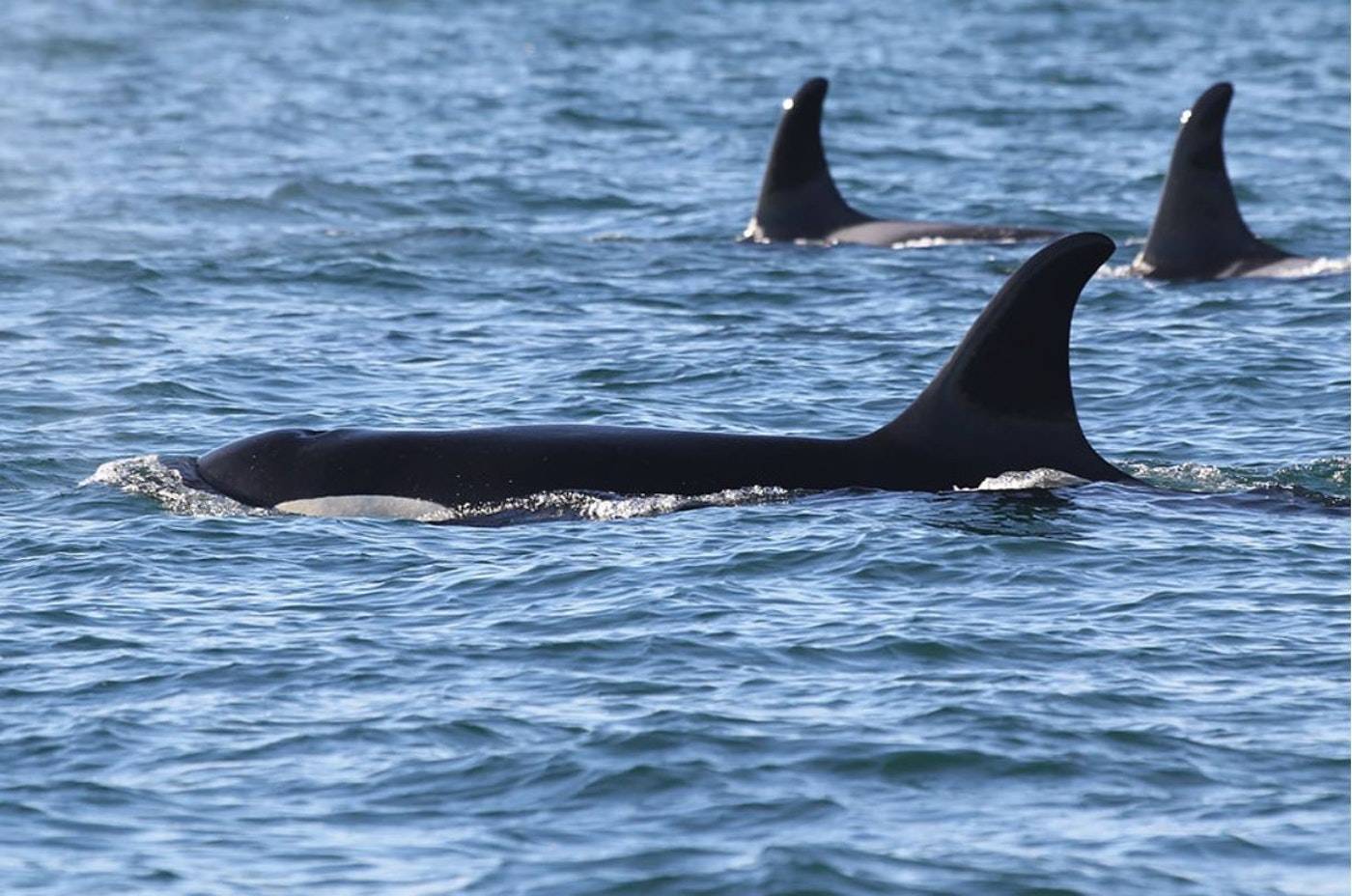Two Southern resident orcas – J17, Slick, and K25, Scoter – are not expected to survive until summer.
Center for Whale Research scientists observed the J-pod on Dec. 31 and noted that J17, a 42-year-old female, has pronounced peanut head, a condition that orcas develop when they’re emaciated. According to staff from the Center for Whale Research, J17 has not improved in health since she was last encountered.
“Perhaps reacting to their mother’s condition, both J35 and J53 were acting mopey,” read the center’s website.
There isn’t enough Chinook salmon to sustain the orca population, according to University of Washington researcher Deborah Giles on San Juan Island. Many of the whales are starving to death.
Southern resident orcas are divided into three familial groups known as pods, J, K and L. The population of the resident orcas is dwindling, having dropped to a 30-year low of 74 members. The K pod is the smallest with just 18 orcas remaining.
A factor in the reduction of the Southern resident orca population is the decline in food availability. The orcas are salmon-eaters that primarily eat Chinook.
Giles is especially sad about the potential loss of J17 because her matriarchal predecessors lived for nearly twice as long – one notable example being J2 who was somewhere from her late 80s to early 100s when she was last observed.
“[J17’s condition is] really sad, being that she’s still a breeding age female. … She’s still, as we know from J16, who had her baby J50 at that age, at 42 they can still have babies,” Giles said. “Right now, in order to restore this population, we really need to be hanging on to breeding age females.”
Washington state Gov. Jay Inslee has committed to increasing the hatchery production of salmon to assist in the recovery of the Southern resident orcas. Additionally, nearly $12 million is proposed in the 2019 operating budget to maximize existing capacity at state-owned hatcheries to produce an additional 18.6 million salmon smolts.
Since the death of his mother K13 in the winter 2017, K25’s health has been deteriorating.
“It’s not super surprising to me that he’s failing healthwise,” Giles said.
Aside from the need for healthy, reproductive-aged females, Giles explained, there is also a significant necessity for males in the pods. Orca mothers assist their adult offspring in hunting and without his mother, K25 has to fend for himself.
“To lose him is a horrible thing because he is the oldest male of that family line,” Giles said.
She last saw K25 in September via research drone.
“It always comes down to this really, really important point in talking about the lack of fish,” Giles said, adding that when humans consider salmon stocks, they tend to divide the supply among themselves and forgo reserving a portion for the Southern residents. “We need to be divvying that pie up including the whales as a stakeholder – as a major interest. … We really need to be taking in the whales’ needs into account.”
Salish Sea communities may be experiencing whale fatigue, noted Giles, but she said it is imperative for their survival that they keep getting all of the attention that they can.
“I think it’s our human responsibility to keep telling the story,” Giles said.



